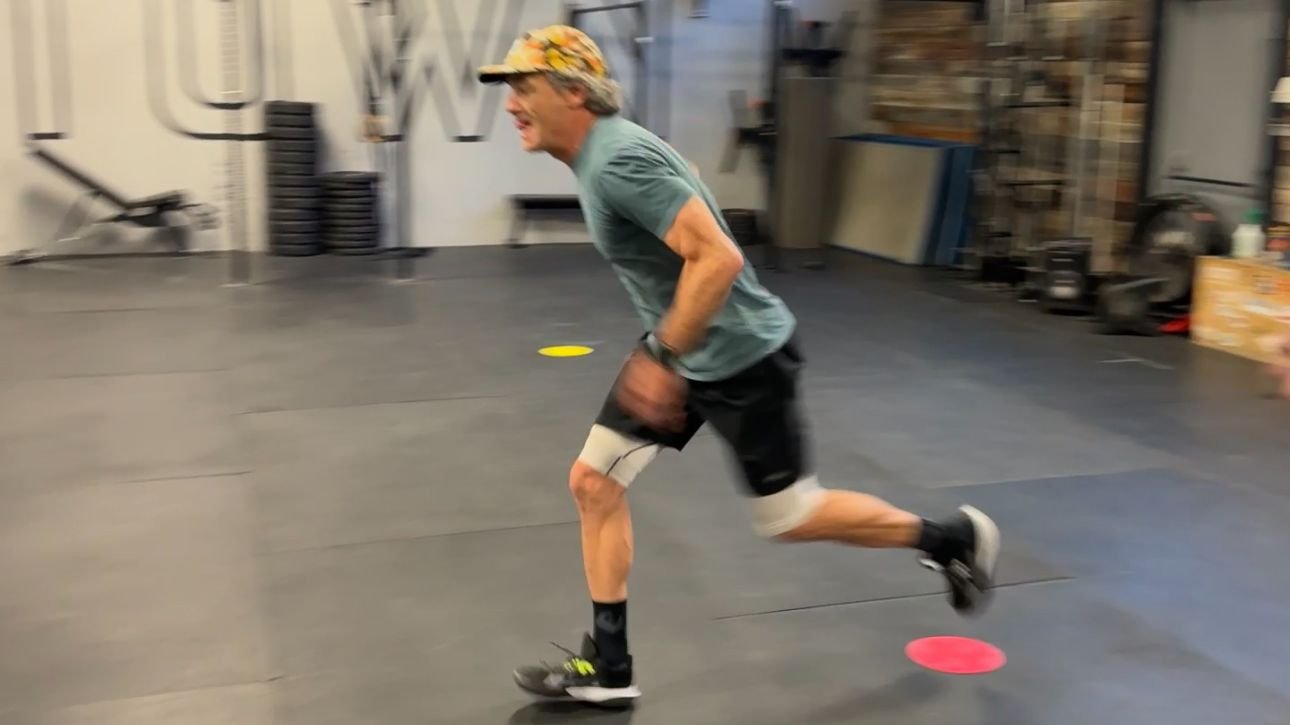Speed and Power: The Difference Between Aging Gracefully and Breaking Your Hip
Check out the Podcast here:
Quotes:
“When it comes to doing fun stuff, especially out in the mountains, speed and power are two of the most important factors that limit what you can or can’t do…They’re also the first qualities we lose as soon as we step out of organized, competitive environments.”
-Dr. Alex Wetmore
“Don't open it up for eight weeks. You'll pull a hamstring. I guarantee it. I've done it several times. I thought I was ready. I wasn't ready. And it's super irritating because then your hamstring hurts and you're like, that was stupid.”
-Ben Van Treese, on training speed + power with running
Speed and Power: The Difference Between Aging Gracefully and Breaking Your Hip
Picture an 80-year-old who looks like they might eat it at any moment. They’re shaky. They’re slow. They’re unsure of each step. They’re looking down for obstacles. If they fall and break a hip, their chances of dying within the next 12 months skyrockets.
That might describe someone you love and care about. That could also describe you in 10, 20, or 30 years – depending on whether you train speed and power, qualities #2 and #3 in our 9 Pillars of Fitness.
Speed and power are the basis of athleticism, and athleticism is longevity. When a 20-year-old trips on an uneven sidewalk, they usually catch themselves before they fall. Their free leg moves with speed and exerts power to arrest the fall. The shaky 80-something-year-old can’t move their leg quickly enough or absorb the force even if they do. There’s not enough fast-twitch muscle left to do the job. They go down hard. If they fracture their hip, their quality of life never returns to what it was.
Basically, speed and power are the ability to move or stop quickly. Speed is distance divided by time – aka, velocity. How fast can you move a foot from point A to B to break your fall? How quickly can you run 100 meters? Power incorporates a load into the equation. It is force multiplied by velocity. You can generate power by moving something heavy slowly. You can also generate power by moving something light quickly.
If you’re an NFL lineman or a Tour de France cyclist, the differences between speed and power matter a lot. For recreational athletes, training speed and power together is more helpful. It’s about learning to apply force all along that spectrum from heavy and slow to light and fast. Pushing a loaded sled across the gym is heavy and slow. Jumping onto a box is light and fast.
After mobility, speed and power are the most overlooked of the 9 Pillars of Fitness. Most Americans stop sprinting and jumping sometime after college, when they retire from intramural basketball, volleyball, soccer, etc. At a typical gym, you don’t see many people jumping high, slamming medicine balls as hard as they can, or running at full speed.
Speed and power drop off faster than any of the other pillars. Some mountain activities – like downhill mountain biking, bouldering, and mogul skiing – demand a lot of speed and power. Some don’t. Picture a recreational road cyclist who takes long steady rides. They mostly tap into their cardio and endurance capacities. Meanwhile, they can lose other physical qualities, like speed and power. Use ‘em or you lose ‘em.
Losing speed and power might seem irrelevant to the healthy 50-year-old cyclist who crushes 50-mile rides. But in 30 years, that 80-year-old is going to be shakier and at much higher risk of injury than the cyclist who spent decades jumping, throwing, sprinting, and slamming in the gym. It’s much easier to retain speed and power than it is to regain those qualities later.
If you’re inspired to start training speed and power – and decide that sprinting up and down your block is a good idea – slow your horses. You will pull a hamstring. We promise.
Here’s a better idea: pick three to five exercises that are fast or bouncy. Do three to five reps of each and do three to five sets. You shouldn't get sweaty. You shouldn't be out of breath. You shouldn't be exhausted. That’s not the point. Whether you’re throwing a medicine ball, jumping onto a box, or sprinting on an airdyne bike, the point is to move as violently and explosively as you can on every single rep.
The more your sport focuses on endurance, the more important it is to train speed and power in the gym. Road cyclists, XC skiers, long-distance runners, and triathletes are at especially high risk of losing these qualities.
That said, aggressive skiers, snowboarders, and bikers should still train speed and power because it will make them more athletic and safer. If you train for that “oh-shit” moment when you overshoot a jump and land flat, you’ll be less likely to injure something when it inevitably happens. For recreational mountain athletes, preventing injury and training consistently are the keys to longevity and performance gains.
In 100 Year Athlete, we incorporate all the speed and power work you need to be athletic in the mountains and stack the cards against breaking your hip in your golden years.
Don’t become the 80-year-old who looks like a disaster waiting to happen. Train speed and power.

